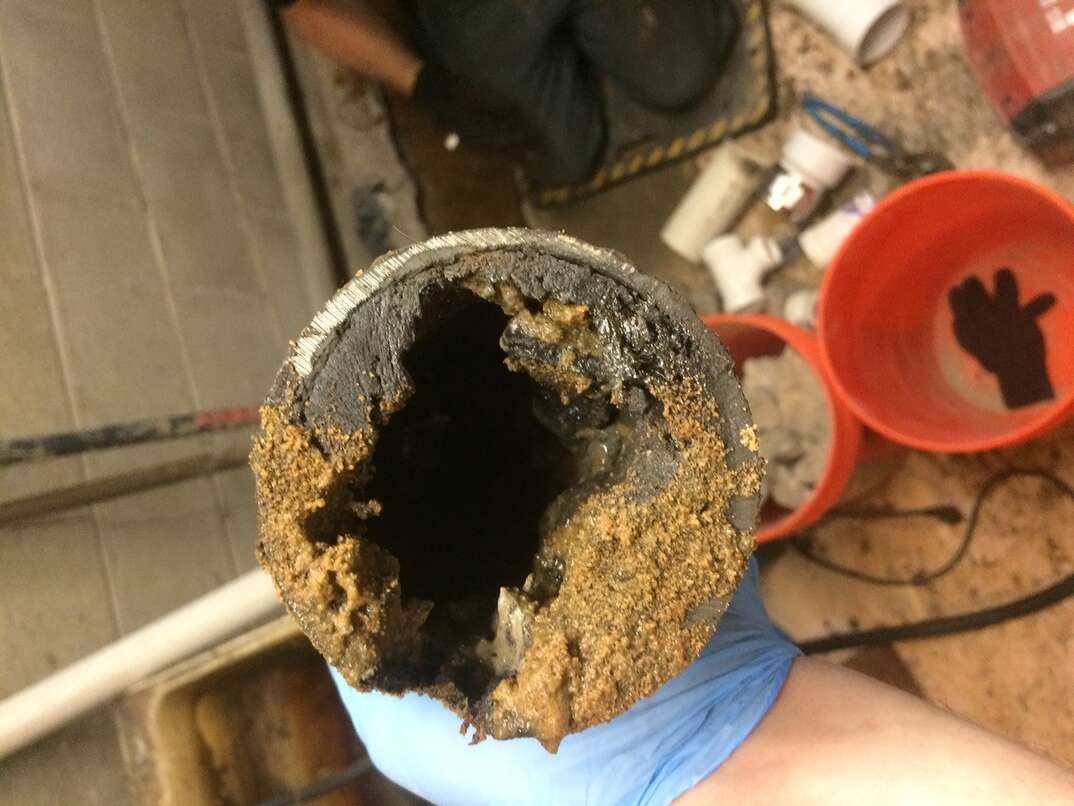5 Ways to Keep Drains Smelling Fresh

Fixing Smelly Drains at a Glance
- Step 1: Keep water in P-trap
- Step 2: Clear clogs
- Step 3: Clean drains and disposals
- Step 4: Clean condensate drain line
- Step 5: Check for leaks
Stinky drains are unpleasant and embarrassing. Smelly drains aren’t just limited to the bathroom; any drain in your house can stink, and the odor can spread around your home.
Luckily, cleaning and keeping your drains fresh is often an easy job.
Why Does My Drain Smell?
Identifying the source and cause of drain odors will help you fix the problem quickly. Common causes include bacteria buildup, clogs, dry P-traps and plumbing problems.
Sewage or Rotten-Egg Smell
P-traps are under most drains and hold a small amount of water that stops gas from coming back up your pipes. If this water evaporates, foul smells can enter your home. Rarely used sinks or drains are especially vulnerable to this problem. For example, a dry P-trap is probably to blame if your guest bathroom’s shower drain smells like rotten eggs.
Smells in Kitchen Drains
Kitchen sinks are susceptible to the same problems as other drains, including dry P-traps, leaks and clogs. However, food and grease buildup can cause bacteria and mold to grow in garbage disposals and drains, leading to bad smells.
Other Causes of Drain Odors
Clogged drains anywhere in your home can begin to stink. Hair, dirt and other debris can lead to buildup and bacteria growth. Other plumbing problems, including leaks and sewer line problems, can cause smells from mold or sewer gas to enter your home.
What Are Some Ways to Make Your Drains Smell Better?
Luckily most bad drain smells are easy to fix. Here are five ways to keep your drains smelling fresh.
1. Keep Water in P-Traps
One of the easiest ways to keep a drain smelling fresh is to ensure the P-trap doesn't dry out. Routinely run water in guest bathrooms to stop sink and shower drain smells. Dumping an occasional bucket of water can keep water in the P-traps of floor drains.
2. Clean Out Clogged Drains
You may be able to clean out minor clogs and buildup in bathroom drains with a liquid drain cleaning product. These products use potent chemicals to dissolve clogs, but may also damage your pipes. Always follow the instructions on the bottle, and don't use these products on drains with garbage disposals.
For more serious clogs, you may need to remove the drain stopper and use a hook or wire to remove the clog. After cleaning out the clog, run hot water through the drain. If the drain is very old or damaged, you may need to consider a replacement.
P-traps can also get clogged. Traps have a small removable cap at the lowest point for cleaning out clogs and debris. Be sure to place a bucket under the drain pipes before removing the cap to catch any mess. Once you're done, replace the cap and run hot water to refill the P-trap.
3. Safely Clean Kitchen Drains and Garbage Disposals
Due to the harsh chemicals, many drain cleaners can't be used in kitchen sinks or garbage disposals. But there are other options for getting mold, bacteria and bad smells out of your drain:
- Pour equal amounts of baking soda and vinegar into the sink. Put the baking soda in first, followed by vinegar. After about 10 minutes, rinse the drain with one to two quarts of boiling water.
- Run a mixture of hot water and dish soap through the garbage disposal.
- Put citrus peels, kosher salt and several ice cubes into the drain and run the garbage disposal for about 15 seconds.
- Use drain cleaner products specially made for garbage disposals.
If these methods don't work, you may want to replace the garbage disposal or investigate whether there are other, deeper plumbing issues.
4. Remember Drains That Aren't Attached to a Shower or Sink
Some homes have drains beyond those for kitchens and bathrooms. Air conditioning systems have condensate drain lines that can clog or grow mildew. Keeping your condensate line clean will prevent foul odors and unhealthy air conditions. Even washing machine drains can start to smell like sewage if they get clogged. Unblocking the drain usually fixes the problem.
5. Check for Leaks or Other Plumbing Problems
Occasionally, drain smells are related to leaks, sewer backups and other plumbing issues. You may be able to handle some problems, like a leaky sink drain flange, yourself. However, you might want to consider professional plumbing services for sewer drain or mainline problems. These issues can be tough to handle on a DIY basis because they may involve exposure to sewage or require special plumbing equipment.


